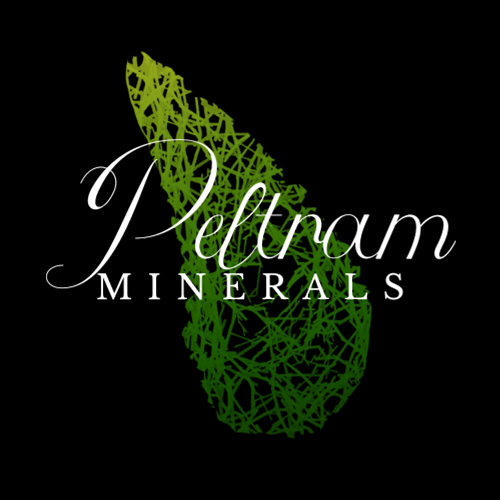Insects in amber in a box with magnifying glass – Lithuania
Locality: Lithuania (Baltic sea)
Amber weight: 0,3g
Approximate size of amber: 0,7 x 0,7 x 0,5 cm
Dimensions of the box with magnifying glass: 2,5 x 2,5 x 2,2 cm
Total weight: 5,6g DETAILED DESCRIPTION
| Category: | Inclusions in amber |
|---|
Baltic amber, also known as "succinite," is a fossilized tree resin found in the Baltic Sea region. This type of amber is one of the oldest and most valuable in the world, dating back to the Eocene epoch, a period of approximately 44 million years ago. It is mined mainly in the area around the Baltic Sea, particularly in Poland, Lithuania, Latvia, Estonia and the Kaliningrad region of Russia. It has been used since the Stone Age for the production of tools, jewellery and decorative objects. In ancient times it was also a valuable trade item and known as "northern gold."
Properties and appearance
- Colour: Baltic amber has a wide range of colors, from light yellow and honey to dark brown and red. The most common shade is golden yellow.
- Transparency: It can be transparent to opaque. The more transparent pieces are often prized for their clarity and ability to show inclusions.
- Inclusions: One of the most distinctive features of Baltic amber are inclusions - trapped remnants of plants and insects that were trapped in the resin millions of years ago. These inclusions are of great scientific value because they provide insight into ancient ecosystems.
Chemical composition
- Succinite: Baltic amber contains high amounts of succinite (succinic acid), usually around 3-8%. This high amount distinguishes Baltic amber from other types of amber.
Insects in amber from Lithuania, as well as in other Baltic amber, are fascinating and valuable finds that provide insight into prehistoric ecosystems. Lithuania, like other countries in the Baltic region, produces amber with various inclusions that often contain well-preserved insects.
Types of insects in Baltic amber:
- Flies - various species of flies are common inclusions. They can be very well preserved, allowing detailed study of their morphology.
- Ants - are often found in amber and provide valuable information on the social behaviour and evolution of these insects
- Wasps and bees - these inclusions include various species of wasps, bees and their relatives, providing insight into the evolution of pollination
- Beetles - very common inclusions and include a wide range of species, from small bark beetles to larger species
- Termites - termite inclusions can reveal much about ancient arboreal ecosystems
- Spiders and other arachnids - although not insects, spiders and other arachnids are commonly found in amber and provide information about ancient food chains
Mining and processing
- Mining: Baltic amber is currently mined mainly in the Kaliningrad region, which produces most of the world's reserves. Mining is carried out both by open-pit and underwater methods.
- Processing: After mining, amber is carefully sorted, cut and polished to bring out its natural beauty. High-quality pieces are often used to make jewellery and art objects.
How to distinguish between Baltic and Ukrainian amber?
- Baltic amber: Baltic amber is mainly mined in the Baltic Sea area, especially around the city of Gdansk in Poland or around the city of Klaipeda in Lithuania. Baltic amber is typically golden yellow to honey-coloured. It is often transparent or translucent and may contain various inclusions such as small plants or insects. It is usually considered to be of high quality, with higher transparency and less brittleness. It has a lower succinite (organic acid) content compared to Ukrainian amber. Baltic amber has a rich history dating back to the Stone Age and has been used in various cultures. Poland and Lithuania are known as one of the world's major amber producers and their amber is highly valued on the international market. It is widely used in jewellery and arts and crafts. Both Poland and Lithuania are famous for their tradition of amber jewellery production and many high quality amber items come from here.
- Ukrainian amber: Amber from Ukraine is mostly found in the area around the town of Rovno and is known as "Ukrainian amber". Amber from Ukraine is often darker, with varying shades of brown, green or black. It can also have beautiful inclusions that add to its attractiveness. It can be more fragile and less transparent compared to Polish amber. Some Ukrainian amber pieces have a higher succinite (organic acid) content, which can affect their texture and appearance. This amber has a long history but is not as well known internationally as Polish amber. Ukrainian amber is often mined by local communities and used for jewellery and art objects.
Caring for amber
- Protection from damAge: Amber is relatively soft (2-3 on the Mohs hardness scale) and sensitive to chemicals. It should be protected from scratches and chemicals that could damage it.
- Cleaning: It is best to clean amber with a soft cloth and lukewarm soapy water. Avoid using hard brushes and aggressive cleaning agents.
Baltic amber is not only a beautiful natural artefact, but also a witness to ancient times, fascinating with its range of colours and rich inclusions. Its unique properties make it a sought-after material for jewellers and scientists who find valuable information about prehistoric ecosystems in it.
Today, amber is still mined and processed with respect to its natural beauty and quality. Although its history goes back thousands of years, its place in the modern world is still relevant due to its aesthetic value and its use in the arts and crafts.





